The yoga studio isn't the only place where you'll hear the words "balancing" and "alignment." You'll also hear these words mentioned when you take your car in for service.
But what do balancing and alignment mean off the yoga mat? Both contribute to a smoother ride, but tire balancing and alignment are different services. A tire balance corrects the weight imbalance on your tire and wheel assemblies, while an alignment corrects the angles of the tires so that they come into contact with the road in just the right way.
If you’re wondering, “What is wheel alignment?” or, “What does tire balancing mean?” it’s time to dive deeper into your car care practice. Learn the difference between the two today.
Tire balancing (also known as wheel balancing) corrects uneven distribution of weight
in the wheels. Imbalanced wheels can lead to vibration, excessive tire wear, damage tothe suspension, and other problems.
During a tire balance service, your tires and wheels are mounted onto a tire balancing machine. The machine spins the tire and wheel assembly to measure the imbalance, so that a technician can precisely install the correct tire weights to achieve a properly balanced wheel and tire assembly. Often, wheel balancing and alignment happen during one service, but they shouldn't be confused for the same thing!
Uneven tire wear and vibration in your steering wheel, floorboard, or seat can signal it's time for tire balancing. You may also want to have your tires balanced during a tire rotation, after a flat tire repair, or as part of your scheduled maintenance.
Interestingly, the part of your car that trembles can indicate whether the front or back wheels need balancing. If it's in the steering wheel, it’s likely your front tires. If it's in the seats, the imbalance is in the back wheels.
Tires can become out of balance because of uneven tire wear or the loss of a wheel weight because a rim hits a curb or pothole.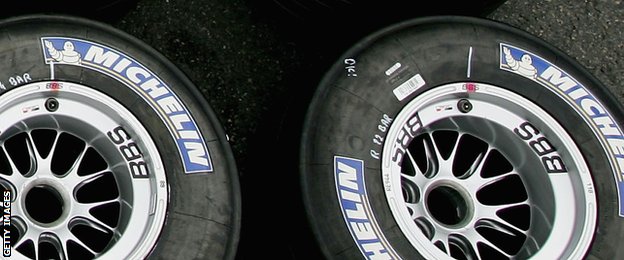 If you leave your car parked for extended periods without moving it, the tires might develop flat spots that cause imbalances.
If you leave your car parked for extended periods without moving it, the tires might develop flat spots that cause imbalances.
Wheel alignment (also known as tire alignment) refers to an adjustment of a car's suspension — the system that connects a vehicle to its wheels. It's not an adjustment of the tires or wheels themselves.
Alignment keeps your car from veering to the right or left. It also can improve the handling of your vehicle and stop unusual on-the-road vibrations.
Your vehicle might need an alignment if you notice any of the following:
Your alignment can get knocked out of whack after being in a car accident, driving over a pothole, or running into a curb.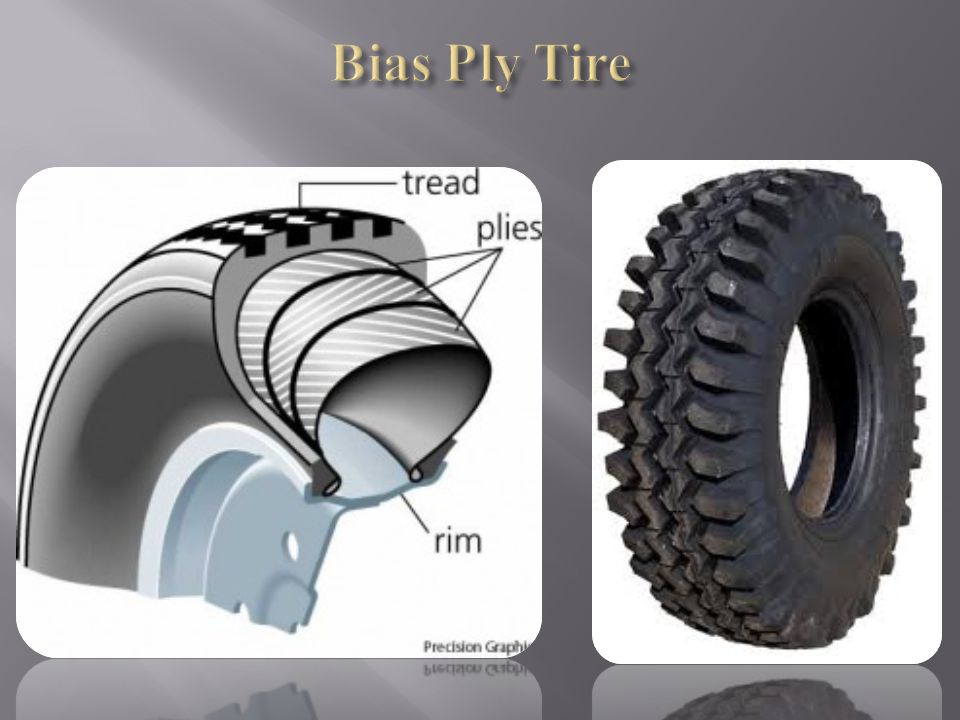
The most significant benefit of balancing services is that they prevent premature tire tread wear. Technicians agree that getting your tires balanced every 5,000 to 6,000 miles (or as recommended by your manufacturer) can help extend their lifespan and improve their performance.
Wheel alignment benefits, on the other hand, include improved vehicle handling, fuel efficiency, and tire life. Firestone Complete Auto Care recommends that you have your vehicle's alignment checked every 6,000 miles or twice a year. Left untreated, alignment issues can shorten a tire's life by thousands of miles, and they can damage critical steering and suspension components.
| Tire Balance vs. Alignment Quicklook | |||
|---|---|---|---|
| Service | Definition | Signs It's Time | Benefits |
| Tire Balance | A tire balance corrects the weight imbalance on your tire and wheel assemblies.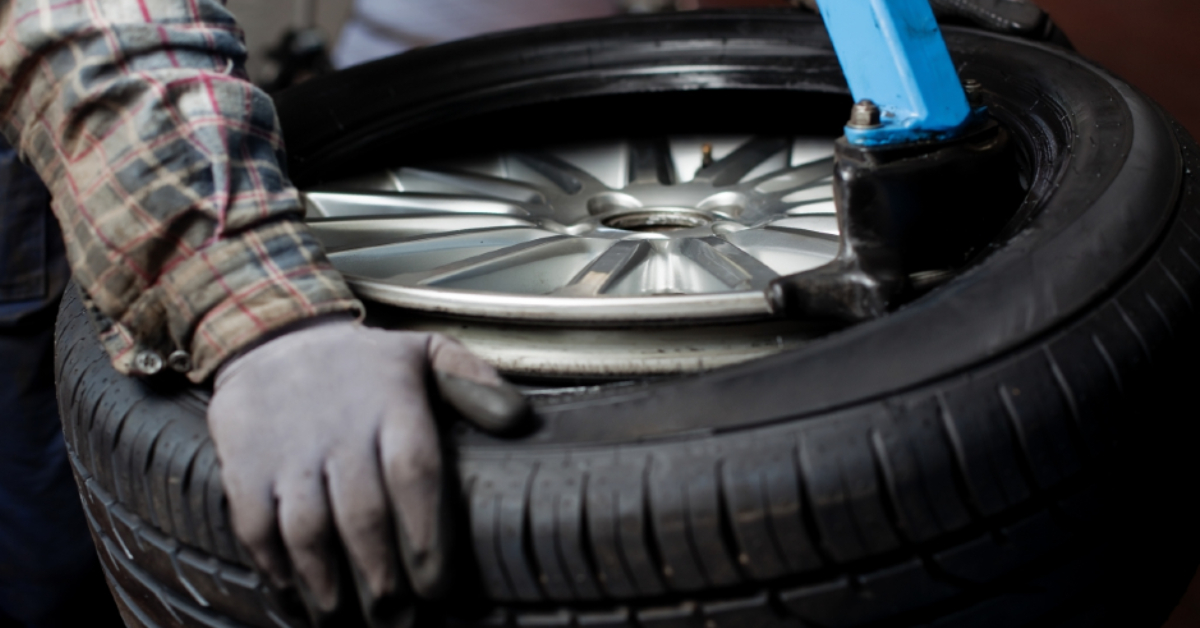
| Uneven tire wear and vibration in your steering wheel, floorboard, or seat. | Proper balancing can lead to a smoother ride, less tire wear, and reduced strain on the drivetrain. |
| Wheel Alignment | An alignment corrects the angles of the tires so that they come into contact with the road in just the right way. | Vehicle pulls to one side, rapid tire wear, squealing tires, or crooked steering wheel when driving straight. | Proper alignment ensures a smoother ride for you and a longer life for your tires. |
Are you noticing symptoms of balancing and alignment issues in your car? Don't let them disrupt your flow. Schedule an appointment at your nearest Firestone Complete Auto Care for a zen-like ride that’s both relaxing and reliable.
Hide Show
COVID-19 Response: Supporting our team members, customers and communities. Learn More
Tires become unbalanced when one part of the tire becomes heavier than the other parts of the tire. But how do they get this way? In this guide, we will go over all different kinds of information about unbalanced tires.
Drivers should read ahead to learn more about how tires become unbalanced, and how to get your vehicle running at optimal performance after noticing these signs.
If your tires are out of balance, there are a few key ways to detect it. Some of the most common signs that your tires are out of balance include:

If you're experiencing any of these things, it's likely that your tires are out of balance.
How Tires Become Unbalanced
Tires can become unbalanced in a variety of different ways starting with the weather. Cold air causes regular tire deflation because of the way the air particles inside the tire contract. However, sometimes the tire can deflate so much that your tires become unbalanced.
Another common reason for tire imbalance is the loss of a wheel weight.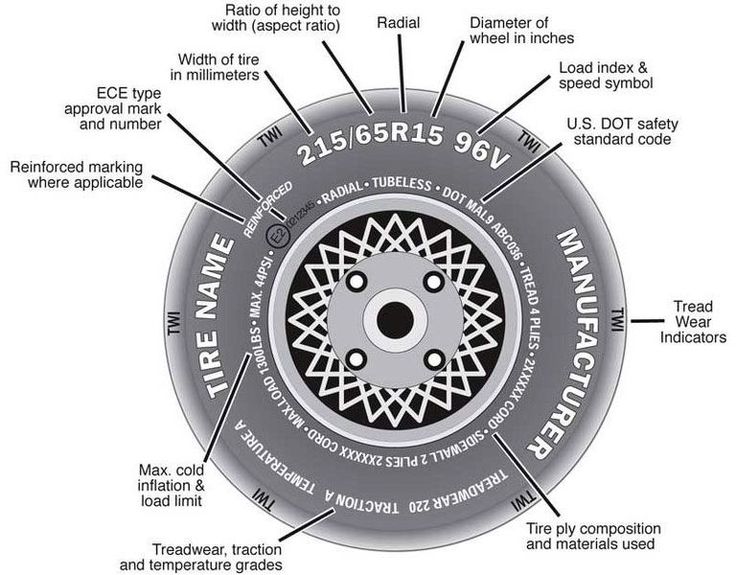 This can happen when you're driving at high speeds and hit either a speed bump, a sidewalk curb, a deep pothole, or any type of object on the road. Hitting a bump or hole can also cause one or more of the steel tire belts to break.
This can happen when you're driving at high speeds and hit either a speed bump, a sidewalk curb, a deep pothole, or any type of object on the road. Hitting a bump or hole can also cause one or more of the steel tire belts to break.
Tire Balance vs Wheel Alignment
Another common problem that can happen with your tires/wheels is that your wheels can come out of alignment. However, these two problems are treated completely differently. Tires are balanced by adding more weights to the tire in order to make it spin correctly. Wheel alignments, on the other hand, straighten out the wheels so they're all driving in the same exact direction.
Some drivers often confuse these two problems because they share a few symptoms in common including uneven tire wear. This is actually the most common sign of wheel misalignment. So, when you take your vehicle into the shop to be checked for unbalanced tires, they'll first rule out wheel alignment issues.
Need Your Tires Balanced?
We hope this detailed guide answered all of your unbalanced tire questions.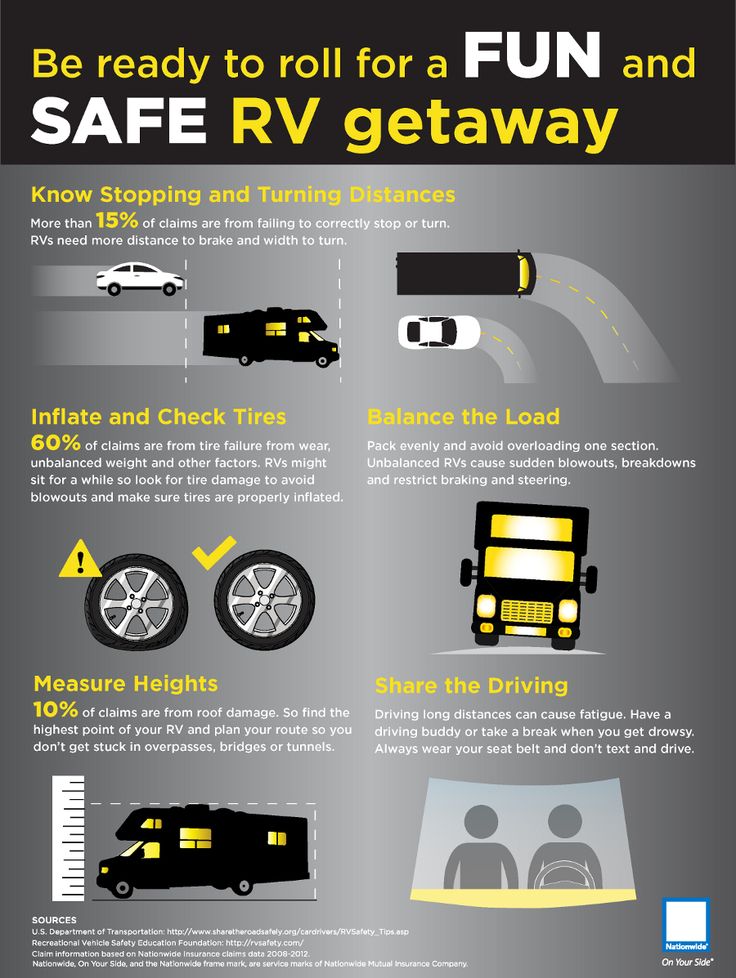 If not, we're happy to answer more questions or get you to schedule for a service appointment. Drivers should give us a call today to have our team help them balance their tires and get them back on the road at optimal efficiency.
If not, we're happy to answer more questions or get you to schedule for a service appointment. Drivers should give us a call today to have our team help them balance their tires and get them back on the road at optimal efficiency.
During the operation of the car, the wheel balance sometimes goes astray and therefore it needs to be restored. Unbalance can occur after hitting a curb slightly, driving on poor road surfaces and getting into potholes, as well as uneven tire wear. There are cases when, having just left the tire shop after installing new tires, the driver could abruptly start off the traffic light with a slip. As a result of this, tires with mounting paste not dried on them scrolled on the disks, and the balance was also disturbed. Therefore, after replacing the rubber, it is recommended to drive in the break-in mode for the first few days - without sudden starts and braking.
Therefore, after replacing the rubber, it is recommended to drive in the break-in mode for the first few days - without sudden starts and braking.
Imbalance (imbalance of the wheel) entails accelerated uneven wear of the tread and runout on the steering wheel, and if you do not take action in time, it will eventually lead to breakdowns of the suspension and steering.
It is important to rebalance the wheels as soon as signs of imbalance are detected, as this causes a reduction in agility, adversely affects road grip and significantly reduces ride comfort with characteristic vibration in the steering wheel and noise.
Many drivers make the mistake of neglecting rebalancing, justifying it with cost savings. The consequences will cost much more, not to mention the safety on the road.
This article will help you understand the features and subtleties of balancing and answer the questions that drivers have when the wheels of their cars are unbalanced.
The essence of wheel balancing is to adjust its mass so that the actual center of gravity is in the middle of the geometric one. Thus, during rotation, the mass is distributed evenly, vibration does not occur, and the life of the tire and bearings increases.
Thus, during rotation, the mass is distributed evenly, vibration does not occur, and the life of the tire and bearings increases.
While restoring the balance, the master uses special equipment - a balancing machine that rotates the car wheel and simulates its behavior on the road. Sensors determine deviations in balance, after which the electronics calculates the weight of the required counterweight and its installation location.
Counterweights (weights) of different weights are then used, which compensate for the detected deviations from the norm, whether it be static, dynamic or combined unbalance.
Be aware that after a balanced wheel is fitted to the machine, unbalance caused by other moving parts may remain.
Finish balancing is the final creation of the desired balance, which is performed after the basic correction of the rim and tire masses. It is carried out with tires and discs installed on the machine, since a violation in the masses can be caused by hubs, brake discs or drums, axle shafts and other moving parts.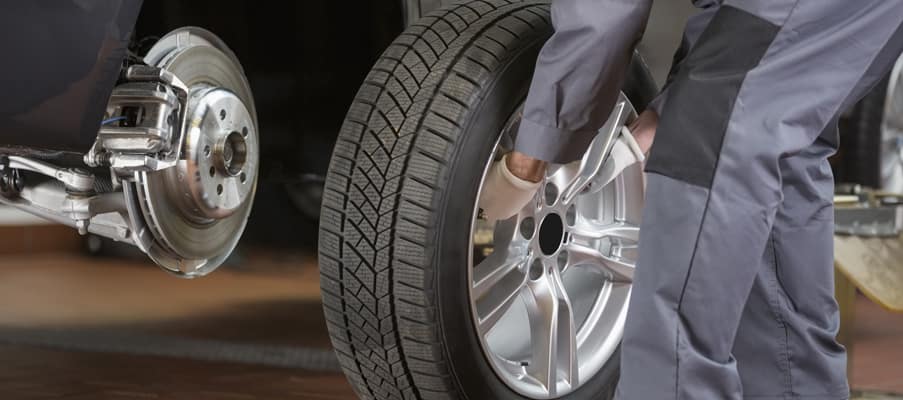
For this operation, special equipment is used - a mobile stand that reads data on vibrations that occur during rotation without removing the disk and rubber from the car, while standing on racks with sensitive sensors. Taking into account more complete data, additional counterweights are installed.
Also use balancing granules (powder), poured directly into the tire. Due to the fact that they move freely inside the tires, there is a uniform distribution of mass. The advantage of this approach is the safety of the granules, they will not go anywhere from tires during operation, unlike weights that tend to get lost.
Negative consequences of driving without balancing:

(ℹ) For more information on the topic of the last paragraph, see the corresponding article - “Uneven tire wear”.
Wheel imbalance is a discrepancy between the axis of rotation and the axis of inertia, due to which its mass is displaced and distributed unevenly during rotation. In order for the rotation to be balanced, the axis of inertia must pass through the center of the wheel.
In order for the rotation to be balanced, the axis of inertia must pass through the center of the wheel.
(ℹ) Unbalance, in addition to the disk and tire itself, also occurs at the hub and at the brake drum.
There are the following types: static and dynamic, if they are combined - combined.
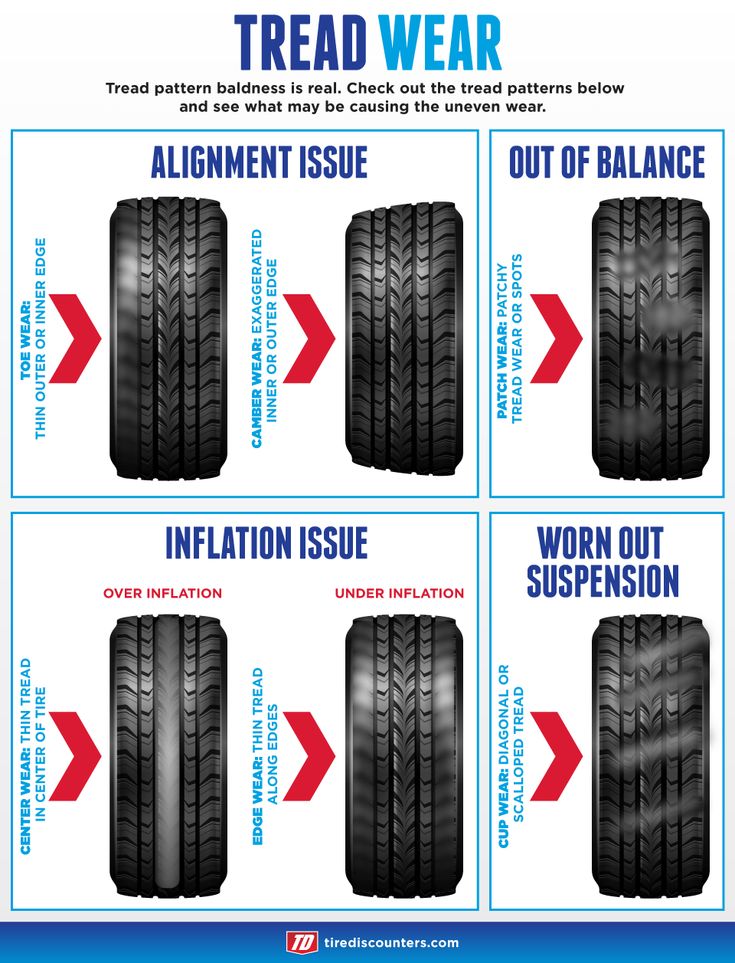
A common cause of imbalance is damage to the rims when hitting a curb or hitting a pothole at high speed. The presence of even a small dent on the disc can shift the center of gravity and cause vibration during movement.
The presence of even a small dent on the disc can shift the center of gravity and cause vibration during movement.
Also, tire imbalance is often caused by tires, since during operation they are subjected to heavy loads and can receive certain defects.
Causes of wheel imbalance:
(ℹ) The cause of unbalance and unwanted vibrations can be instep supports (centering rings), or rather their absence, as well as improper selection or failure.
If the diameter of the hub and the center hole of the disc (DIA) do not match, it is necessary to install centering rings that compensate for their difference.
(ℹ) Even a small deviation in the balance of a car wheel can significantly affect the suspension and subject it to large loads.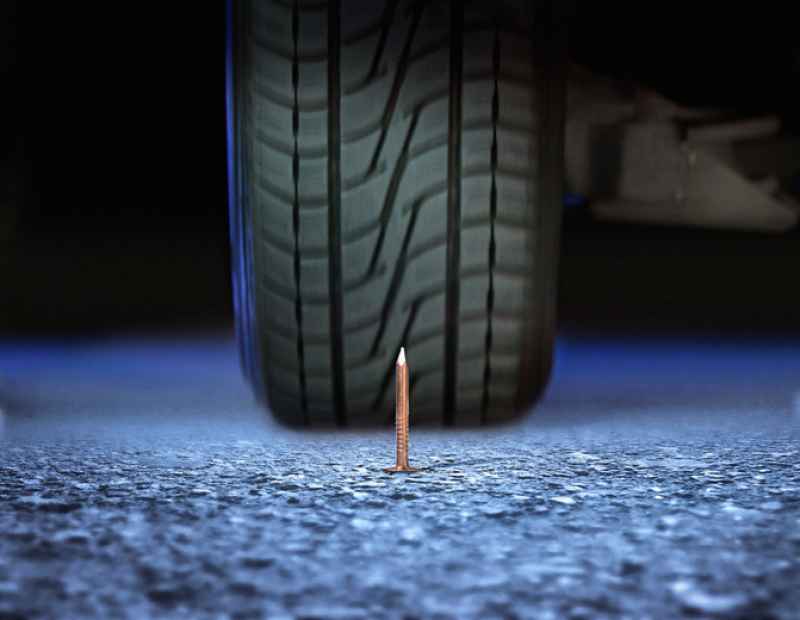 According to approximate calculations, a difference in weight of 10 g turns into 2.5 kg, if the car moves at a speed of 100 km / h, then in a minute the suspension will receive about 1000 hits of such a mass.
According to approximate calculations, a difference in weight of 10 g turns into 2.5 kg, if the car moves at a speed of 100 km / h, then in a minute the suspension will receive about 1000 hits of such a mass.
If, when accelerating, vibrations appear in the steering wheel, body, and noise occurs, it is highly likely that the wheels need to be balanced.
Depending on the degree and type of imbalance, symptoms may appear at different speeds:
Signs indicating a malfunction:

⚠️ Important! When accelerating on unbalanced wheels, shaking and noise will increase, as well as a characteristic kickback in the steering wheel and pedals. With a serious imbalance, directional stability will noticeably decrease, and driving will become potentially dangerous.
On different axles, the imbalance manifests itself in different ways and its signs may differ:
⚠️ Important! Car owners often ask: "Do I need to do balancing on the rear axle?". Answer: yes, definitely! Despite the fact that the driver does not feel the imbalance so clearly on the rear axle, all its negative impact remains and cannot be ignored.
(ℹ) If trembling is felt only while pressing the brake pedal, the reason may be in the brake discs (if one of them is deformed, both should be replaced on the axle) or in the jamming of the caliper.
The frequency of balancing depends on the following factors:
Depending on the manufacturer, there are different colored marks on tires, as a rule, these are:
The yellow dot is the lightest place on the tire, it is combined with the heaviest place on the rim (inflation valve or the opposite point from the "L" mark) , this helps not to use additional weights.
The red dot is the heaviest part of the tire, as a rule, there is a carcass connection, it is combined with the lightest part of the disk (the designation “L”, is not always indicated).
For correct balancing it is necessary:
Yes, new tires and rims must be balanced. Even though it is a new set of wheels and has not been used yet, it has heavy and light spots that need to be properly balanced. Proper mounting and balancing will help ensure long and safe operation of the wheels.
Yes, in most cases, after a new tire has been broken in, it should be re-balanced (on average after about 500-1000 km). This is due to the fact that only during operation under load the tire will take its final position on the disk.
The effect of the so-called "shrinkage" can occur due to the change in the position of the tire under pressure and the weight of the vehicle. Also, during the break-in process, the rubber may turn a little on the disc due to too sharp a start from a standstill, braking or maneuvering.
All of the above often leads to a change in balance, so balancing after a break-in is necessary.
(ℹ) It should be noted that on the forums, some motorists, sharing their personal experience, claim that after running in they did not need balancing. A slight imbalance was caused only by sand and dirt accumulated on the inside of the disk, which turned out after washing.
This scenario is possible, but on the condition that during installation the tire immediately took the “ideal position”, and the driver adheres to a careful driving style and drives only on good roads - which is very rare.
First you need to do the balancing of the wheels, then the wheel alignment. This applies to both seasonal tire changes and scheduled maintenance or visits to a service station if signs of violation of installation angles are found.
Let's consider each case separately and see why balancing is performed first, and then the wheel alignment angles are adjusted:
check the toe and camber angles on the stand.
Adjustment of the alignment angles is carried out only after installing new wheels, because any change in the parameters of tires and wheels can affect the required alignment angles. For example, a change in the optimal angle for a correct installation could be caused by:
(ℹ) The owner's manual of some car models obliges the driver to adjust the angles when changing tires for the season. Often this requirement applies to premium segment cars with large disc diameters and complex kinematic suspension. If there are no such rules from the auto manufacturer’s factory, then this prescription is advisory in nature, which is important to listen to.
2. During scheduled maintenance (prevention) - the wheels are removed, their mass is corrected and installed on the car in a different order in accordance with the rearrangement (rotation) scheme in order to extend the rubber life. Accordingly, the adjustment of the angles occurs after this procedure. Maintenance is carried out on average every 10 thousand km.
3. In case of an unscheduled visit to the service station due to a violation of the corners - experts insist on balancing in the first place to eliminate this malfunction.
(ℹ) In addition to uneven tire wear, signs of poor camber may include the machine pulling to the side when the steering wheel is released and its unnatural (uneven) position when driving straight ahead.
Summarizing the above, we can conclude that balancing should be done, and at the first signs of imbalance, it must be promptly eliminated. This will ensure safety and comfort on the road, save the life of vehicle components, in particular the suspension and tires, and also help save fuel.
Even a small deviation, whether it be grams or degrees, which may not be felt while driving, certainly affects the life of rubber and suspension.
Remember, timely car service today is saving time and money tomorrow, because prevention is always cheaper than repair!
We wish your car no malfunctions, and the wheels always be balanced!
Monday, August 15, 2016 15:18:03 Europe/Moscow
Deformation is a change in the size or shape of a solid body under the action of external forces. Applicable to tires, two types of deformation can be distinguished:
Functional deformation is one of the duties that a modern tire must fulfill. Namely, to deform, reducing the vibration and noise impact on the car and the driver, which occurs when the tire rolls on the road surface. The flexibility of the tire structure, as well as the correct pressure inside, allow the tire to perform this function without problems, while making a huge amount of deformation per unit of time without negative consequences.
Critical deformation is precisely characterized by the fact that it may result in complete or partial destruction of the tire, excluding its further use. Critical deformations include:
- warehouse;
- arising from prolonged standing of the car;
- resulting from driving with a pressure lower than recommended;
- shock with sidewall destruction.
Tire deformation due to improper storage
The damage that a tire receives when the tire storage rules are violated is a fairly common operational damage that is not a consequence of the tire performing its functions. Among this type of critical deformations, the following tire damage occurs:
- bead ring fracture that occurs during long-term storage of herringbone tires. Unfortunately, storage in this way is a very common practice, although tire manufacturers recommend using it only for the limited time needed to transport tires. A bead ring fracture is a non-repairable defect, and it is not recommended to install such tires on rims.
How to avoid:
New tires must be carefully inspected upon receipt. In addition, during long-term storage, it is recommended to put the tires on the tread, in a vertical position, using special racks that do not damage the tires.
- tire curvature when stacked . This method of storage is still common, and it is also especially dangerous for those tires that ended up at the bottom of the stack. And the higher this design, the more the lower tires suffer. Such storage can cause the tire to warp internally, which in turn can cause the tire to side-slip, as well as uncontrolled imbalance or vibration.
How to avoid :
Buy tires from professional tire centers and avoid those shops where there are a huge number of stacks of tires on the sales floor (more than four tires high). Since the internal curvature of the tire cannot be seen with a visual inspection, and only a balancing machine will help identify the first signs of tire problems. Tire storage by the owner should also avoid stacking tires, even if the number of tires is limited to four.
Tire deformation that occurs when the car is parked for a long time
Few people know that tires can be damaged and from a long stay in an upright position , with air inside. As a rule, this is possible when the car is parked in one place. This position deforms the tire, depriving it of a perfectly round shape. When driving on such a tire, vibrations and noise may occur. Non-repairable damage to the internal structure of the tire is also possible, especially for tires that have been in operation for a long time.
How to avoid:
The technical documents recommend limiting such extended stays to two days for fully loaded vehicles and ten days for unladen vehicles. If you need a longer parking of cars, you should reduce the load on the tires using stands or moving the car.
Tire deformation due to low pressure driving
One of the most common forms of critical deformation is irreversible tire change , which occurs due to the operation of a tire with low internal pressure. Due to this insufficiency, normal working deformations become redundant, and the tire walls, not designed for excessive bending, begin to heat up beyond measure. Thus, the destruction of the tire itself begins. First, the sealing layer is destroyed: it begins to bulge on the inner surface of the junction of the sidewall and the treadmill, then it peels off, and a rubber coating is formed. Then the sidewall, exposed to the carcass threads, begins to crack, and the air leaves the tire. Further driving on such a tire can lead to a complete separation of the sidewall from the tread.
How to avoid:
Monitor pressure. In addition to checking, you need to regularly change the valves, repair tires in a timely and efficient manner, and avoid driving on damaged tires. Since all this can lead to a slow loss of pressure and to the appearance of a critical deformation of the tire.
Tire deformation under shock impact load
If the tire hits a hole , hits a foreign object on the road, deformation of the tire may occur, which can destroy the product at a time. If this happens at high speed, and the edges of the pit or object are sufficiently hard and sharp, then the chances of an instant destruction of the tire increase significantly. In such a situation, the sidewall of the tire is pinched between the rim and the surface, for example, in pits. The influence of other factors (speed, aggressiveness of the obstacle) leads to the appearance of an impact force that breaks several threads of the frame. The weakened part of the sidewall of the tire is easily deformed by internal pressure, and a hernia appears. Further operation of the tire is not recommended . It is worth noting that sometimes the rupture of the carcass threads is accompanied by a rupture of the inner and outer layers of the sidewall of the tire, leading to a loss of pressure, which, of course, excludes further repair of the tire and its use.
How to avoid:
Cautiously reduce your speed when driving over poorly paved road sections, avoid hitting curbs and other foreign objects. If bad roads are a fairly common occurrence, then it will not be out of place to pay attention to technologies that protect tires from damage. For example, Michelin uses IronFlex technology for some of its models (MICHELIN Energy XM2, X-Ice North 3, X-Ice 3), which reduces the chance of damage to the sidewall of the tire during shock deformation. For the same purpose, a double carcass is used for off-road tires of the Latitude family, which also reduces the likelihood of premature tire failure due to carcass damage.